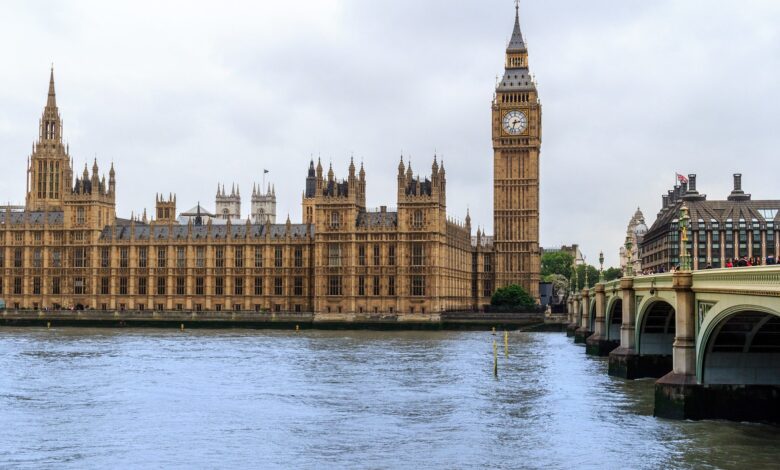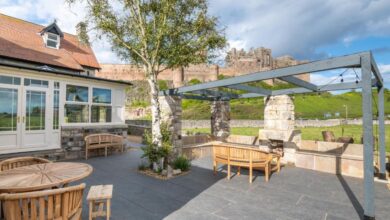What Are the Houses of Parliament?

A Closer Look at the Houses of Parliament: History, Architecture, and Significance
The Houses of Parliament are among the most iconic landmarks in the United Kingdom. Located in the heart of London, they are not only a symbol of British democracy but also a masterpiece of Gothic Revival architecture. In this article, we’ll explore the history, structure, and importance of the Houses of Parliament in a way that’s both informative and easy to understand.
What Are the Houses of Parliament?
The term Houses of Parliament refers to the two chambers of the UK Parliament: the House of Commons and the House of Lords. Together, they form the legislative body responsible for making and passing laws in the United Kingdom.
The building that houses them is officially known as the Palace of Westminster, situated on the north bank of the River Thames in central London.
A Brief History of the Houses of Parliament
The current Palace of Westminster was constructed after a fire in 1834 destroyed much of the old structure. The rebuilding project was designed by architect Charles Barry, with stunning interior and decorative work by Augustus Pugin. The new design was a nod to the medieval Gothic style, which gave the Houses of Parliament their now-famous appearance.
Although the palace looks like it belongs to an earlier era, most of it was built in the mid-19th century, making it relatively modern in historical terms.
Key Features of the Houses of Parliament
The Elizabeth Tower (Big Ben)
One of the most recognizable parts of the Houses of Parliament is the Elizabeth Tower, which houses Big Ben, the famous clock bell. Although many people mistakenly call the whole tower “Big Ben,” the name actually refers to the largest bell inside the tower.
Central Lobby
This is the heart of the Parliament building where members of both Houses can meet. It’s also where the public can come to lobby MPs (Members of Parliament) directly, hence the name.
Westminster Hall
Dating back to 1097, Westminster Hall is the oldest part of the Houses of Parliament. It has witnessed some of the most significant events in British history, including royal banquets, state trials, and speeches by world leaders.
The Role of the Houses of Parliament Today
The Houses of Parliament play a vital role in UK governance. Here’s what happens inside:
- Debating and passing laws
- Scrutinizing the government’s actions
- Representing the interests of the public
The House of Commons, made up of elected MPs, is the more powerful of the two chambers. The House of Lords reviews legislation and provides expertise but cannot ultimately block laws passed by the Commons.
Visiting the Houses of Parliament
You don’t have to be a politician to experience the grandeur of the Houses of Parliament. Guided tours are available to the public, offering a glimpse into the heart of British democracy. Visitors can walk through key areas, including the Commons Chamber, the Lords Chamber, and Westminster Hall.
Tours are especially popular among history lovers, architecture enthusiasts, and students learning about British politics.
Final Thoughts
The Houses of Parliament are much more than just a stunning building on the London skyline—they are a working institution that has helped shape modern democracy. With its rich history, architectural beauty, and ongoing political significance, it continues to be a central symbol of British public life.
Whether you’re a tourist, a student, or simply curious about how the UK government functions, learning about the Houses of Parliament is always worth your time.
Sure! Here’s a FAQ (Frequently Asked Questions) section related to the Houses of Parliament, written in a clear, informative, and original style. It can be used as part of your article or as a standalone section.
Frequently Asked Questions (FAQ) About the Houses of Parliament
1. What are the Houses of Parliament?
The Houses of Parliament refer to the two chambers that make up the UK Parliament: the House of Commons and the House of Lords. Together, they are responsible for debating, creating, and passing laws in the United Kingdom.
2. Where are the Houses of Parliament located?
They are located in Westminster, London, along the north bank of the River Thames. The building is officially called the Palace of Westminster.
3. What is the difference between the House of Commons and the House of Lords?
- The House of Commons is made up of elected Members of Parliament (MPs). It holds the most power in making laws.
- The House of Lords is made up of appointed members, including life peers, bishops, and hereditary peers. It reviews and suggests changes to legislation but cannot permanently block laws passed by the Commons.
4. Can the public visit the Houses of Parliament?
Yes, the public can visit the Houses of Parliament. Guided tours are available for both UK residents and international visitors. You can explore historic parts of the building like Westminster Hall, the Commons Chamber, and the Lords Chamber.
5. What is Big Ben? Is it part of the Houses of Parliament?
Yes, Big Ben is part of the Houses of Parliament. However, the name “Big Ben” actually refers to the bell inside the Elizabeth Tower, not the tower itself. The Elizabeth Tower is located at the north end of the building and is one of the most famous landmarks in London.
6. Who designed the current Houses of Parliament building?
After a fire destroyed much of the old palace in 1834, the new design was created by Sir Charles Barry, with detailed Gothic Revival work by Augustus Pugin. Their collaboration gave the palace its iconic appearance.
7. When was the Palace of Westminster built?
The current Palace of Westminster was constructed between 1840 and 1876, following the 1834 fire. However, Westminster Hall, the oldest part of the complex, dates back to 1097.
8. Why are the Houses of Parliament important?
The Houses of Parliament are the central legislative body of the UK. They are responsible for shaping the country’s laws, holding the government accountable, and representing the views of the public.
9. Are the Houses of Parliament used for anything else besides politics?
Yes, they are also used for state occasions, official ceremonies like the State Opening of Parliament, and have historical significance as a symbol of British democracy. Parts of the building are also open for educational visits and public events.
10. How can I watch debates or Prime Minister’s Questions?
You can watch live debates, including Prime Minister’s Questions (PMQs), either by visiting the House of Commons public gallery (by booking in advance) or by watching online through official UK Parliament streaming platforms or TV channels like BBC Parliament.




